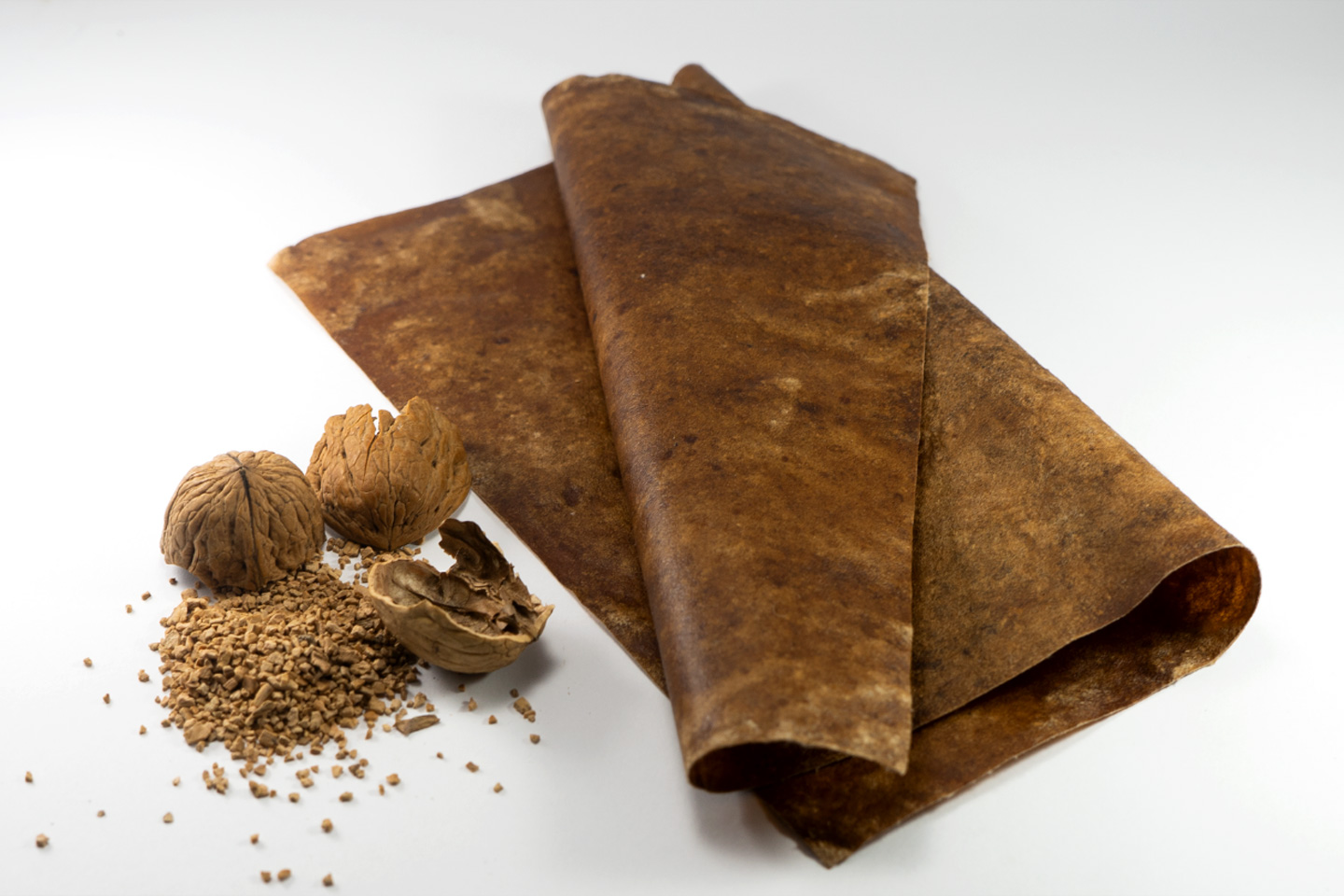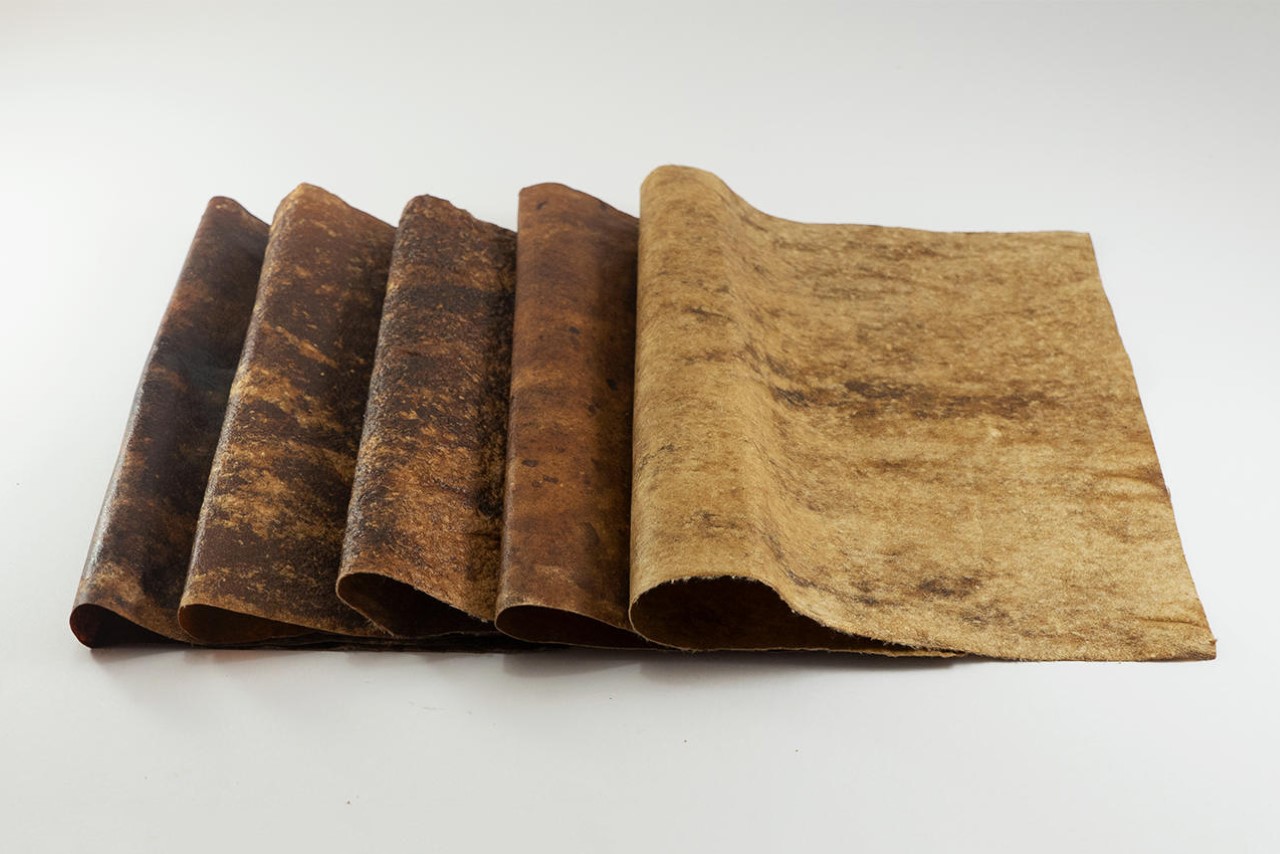
Meet Kudarat, a leather alternative synthesized using algae, food & fiber waste. Created by Divya Verma of the National Institute of Design in India, Kudarat bases itself on the concepts of circularity & sustainability, target SDGs (sustainable development goals). Kudarat leather resembles animal leather but is cruelty-free, waterproof, compostable, antimicrobial, and possesses good tensile strength, making it perfect for practical applications. It secured the National Runner-Up position at this year’s James Dyson Awards, narrowly being beaten by a design for a reusable epipen.
Designer: Divya Verma

A textile designer by profession, Divya’s journey toward reinventing leather began with watching her mom diligently compost all organic and food waste at home, using the proceeds to then cultivate a veritable garden of plants, fruits, and flowers. “While researching its nutrient values, I learned how food waste ends up in landfills, rots & releases harmful greenhouse gases such as methane contributing to global warming”, she said. “Similarly, fiber waste from the textile industries pollutes water bodies, enters our food chain, and harms life on land & underwater to a large extent. This motivated me to come up with a new material that utilizes renewable natural resources & helps in waste management.”
Kudarat uses natural fiber waste, bound together using natural binders, biopolymers from algae, and natural waterproofing agents. Once the sheets of bioleather are made, they’re dyed using natural colors derived from food and flower waste, like vegetable peels, walnut shells, wood chips, roses, and marigolds. “The development of material does not require large land or water resources and does not lead to carbon emissions”, Divya mentions. “It is free from chemicals and the production requires temperature below a 100 degrees [Celsius] & is energy efficient.” The leather looks, feels, and lasts as long as traditional animal-hide and even lends itself to embellishment and embroidery… but if and when discarded, will biodegrade naturally in 8-12 weeks while leaving zero harmful chemicals behind.